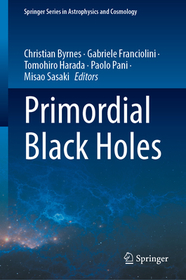
Primordial Black Holes
Series: Springer Series in Astrophysics and Cosmology;
- Publisher's listprice EUR 149.79
-
62 125 Ft (59 167 Ft + 5% VAT)
The price is estimated because at the time of ordering we do not know what conversion rates will apply to HUF / product currency when the book arrives. In case HUF is weaker, the price increases slightly, in case HUF is stronger, the price goes lower slightly.
- Discount 12% (cc. 7 455 Ft off)
- Discounted price 54 670 Ft (52 067 Ft + 5% VAT)
Subcribe now and take benefit of a favourable price.
Subscribe
62 125 Ft

Availability
printed on demand
Why don't you give exact delivery time?
Delivery time is estimated on our previous experiences. We give estimations only, because we order from outside Hungary, and the delivery time mainly depends on how quickly the publisher supplies the book. Faster or slower deliveries both happen, but we do our best to supply as quickly as possible.
Product details:
- Edition number 2024
- Publisher Springer Nature Singapore
- Date of Publication 1 May 2025
- Number of Volumes 1 pieces, Book
- ISBN 9789819788866
- Binding Hardback
- No. of pages706 pages
- Size 235x155 mm
- Language English
- Illustrations XXVI, 706 p. 176 illus., 149 illus. in color. Illustrations, black & white 658
Categories
Long description:
Primordial black holes (PBHs) were proposed more than 50 years ago as black holes possibly formed across a vast mass range in the early universe. They represent a unique probe to access the primordial universe and cosmological inflation. Furthermore, in certain mass ranges, they could comprise the entirety of the dark matter, seed supermassive black holes at high redshift, be responsible for some gravitational-wave events detected so far, and be novel gravitational-wave sources detectable with future instruments. However, detecting PBHs has proved to be extremely challenging and extensive research focused on setting a variety of constraints on the fraction of dark matter composed by these objects.
This book highlights an up-to-date, comprehensive overview on this subject, including pedagogical details on the PBH formation scenarios, cosmological evolution, astrophysical implications, connections with gravitational-wave astronomy, and critical discussion of the latest and future constraints.
At variance with all existing reviews on this subject, this book addresses graduate students and researchers not necessarily familiar with all areas of the topic, providing details on important key results rather than collecting and reviewing the latest literature.
The topic is naturally interdisciplinary and connects areas as diverse as cosmology, particle physics, gravitational-wave astronomy, and numerical simulations. To reflect this diversity, the book includes 25 contributions from key researchers working in these different areas. It provides a unique reference both to approach the topic for the first time and to learn a specific specialized sub-area.
MoreTable of Contents:
1. The history of PBHs.- 2. - The future of PBHs.- 3. Formation.- 4. Cosmological evolution and astrophysics implications.- 5. PBH scenario in the gravitational-wave era.
More





